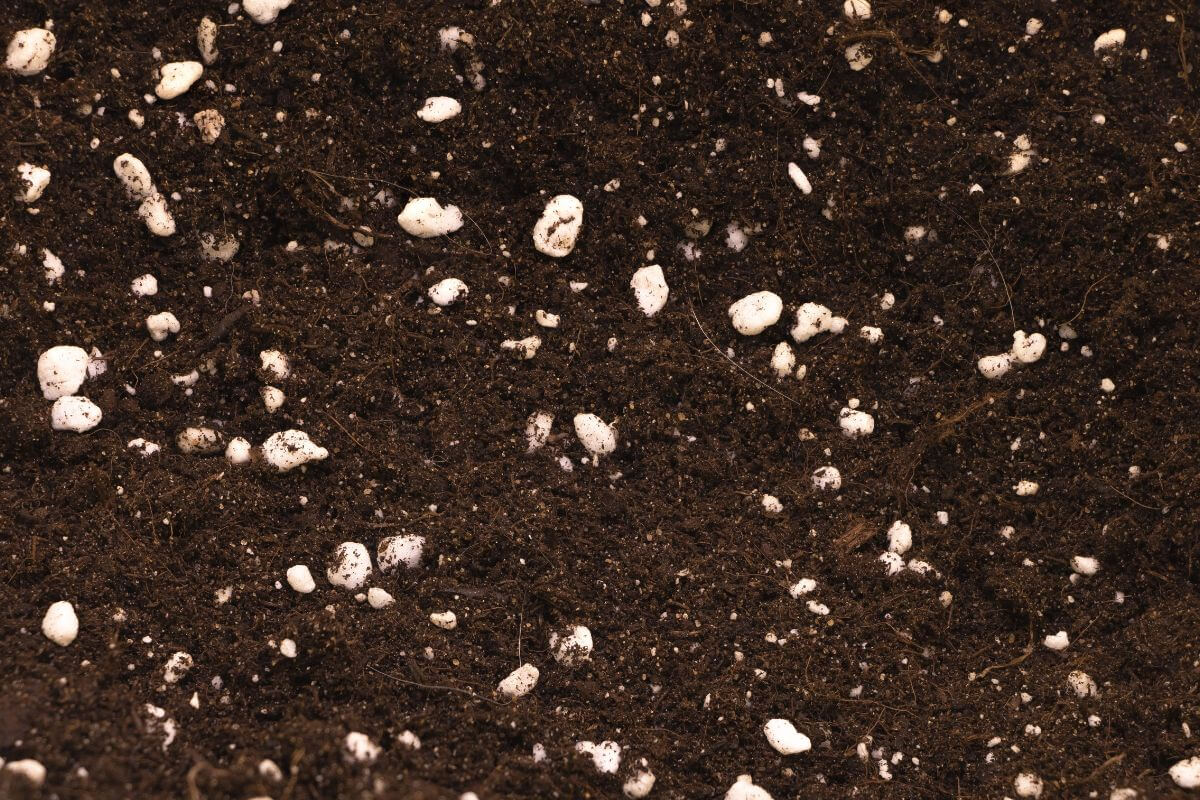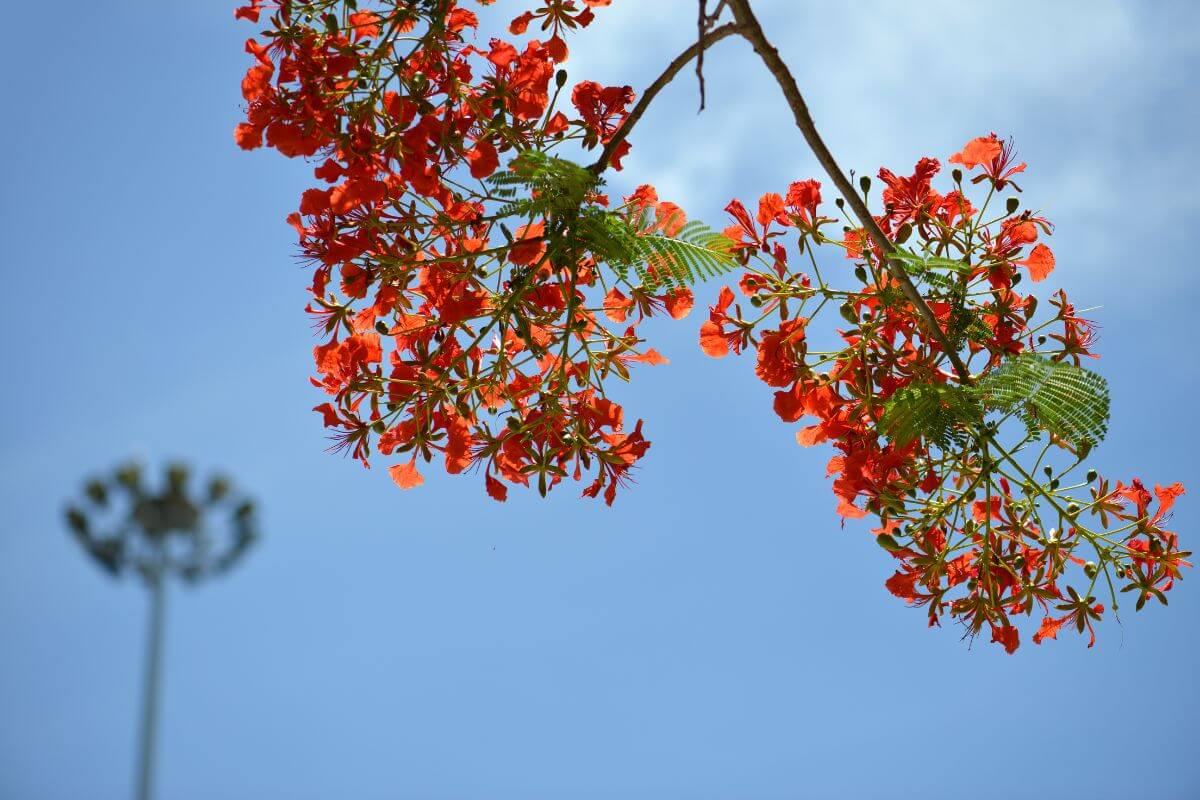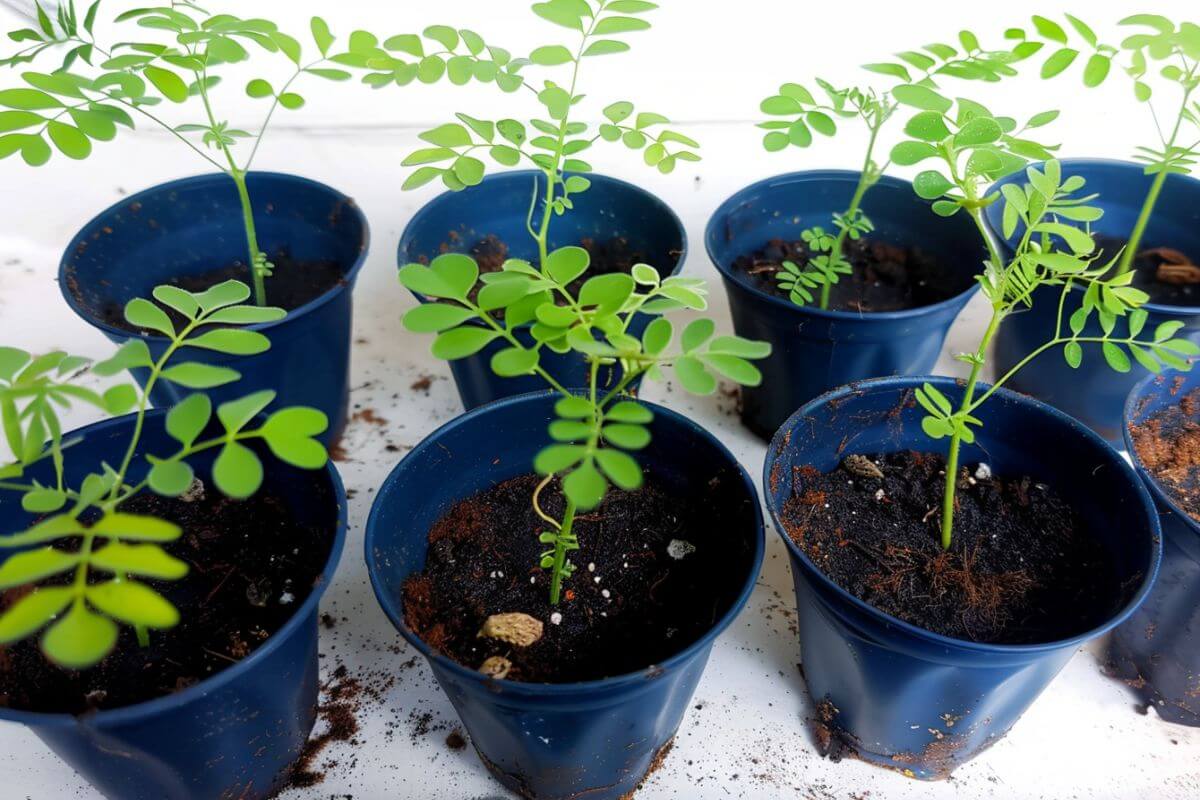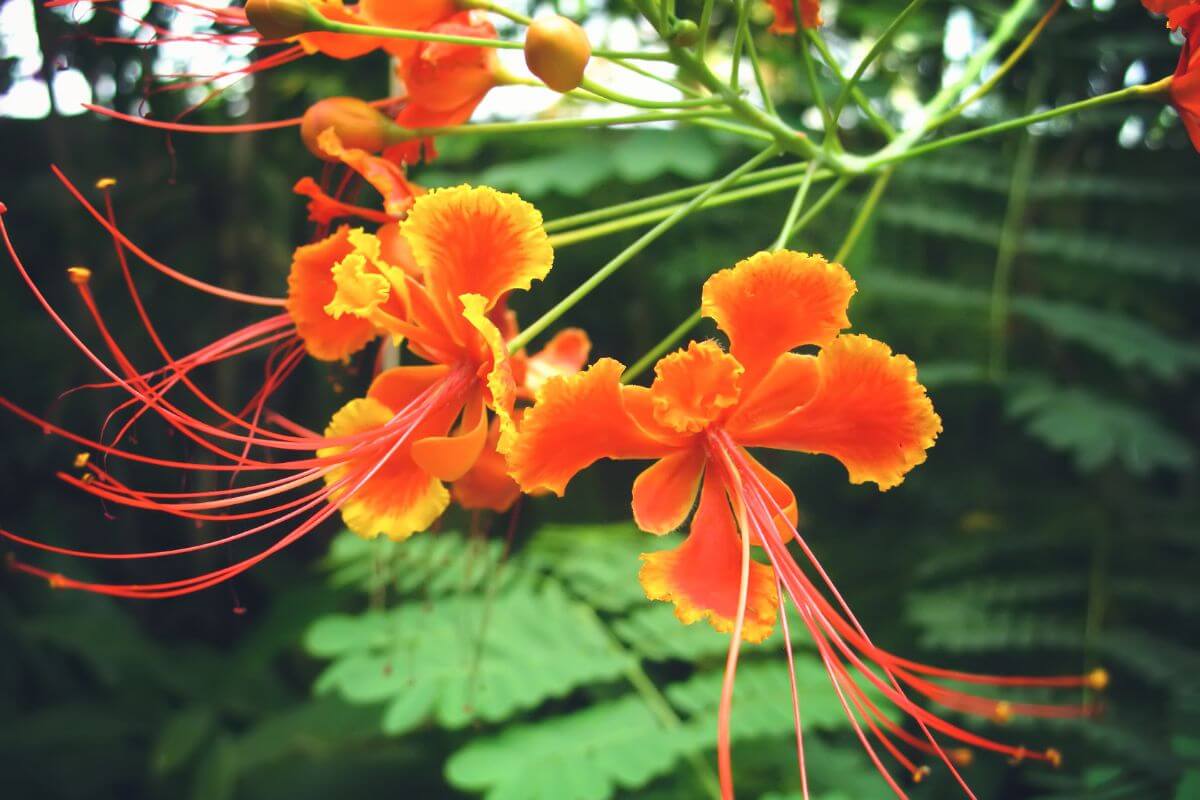Want to grow a Mexican Bird of Paradise? It’s known for its lush green leaves and unique red, orange, or yellow flowers. If you’re in a warm climate or have a sunny spot, propagating this plant is a great way to bring color to your surroundings.
I’ll guide you through the process, covering everything from preparing the soil to handling pests. You’ll learn about the plant’s preferred environment, the best way to water it, and how to ensure it gets the right balance of light and shade.
Ever wondered how to create a stunning garden feature from a single seed? Join me in exploring how to grow and care for Mexican Birds of Paradise.
- Related article: Types of Bird of Paradise Plants
6 Key Takeaways on Mexican Bird of Paradise Plant
- The Mexican Bird of Paradise belongs to the Caesalpinia genus. It boasts lush foliage and distinctive red, orange, or yellow flowers resembling flame-colored birds.
- The Mexican Bird of Paradise is suitable for USDA Hardiness Zone 8 or higher. It thrives in warm climates and can flower year-round in tropical regions.
- Proper care for the Mexican Bird of Paradise involves using well-draining soil, providing ample sunlight, and watering regularly. Adjustments should be made based on the plant’s specific needs.
- Pruning the Mexican Bird of Paradise in early spring and protecting it during freezes ensure healthy growth and regrowth after dormancy.
- When propagating the Mexican Bird of Paradise from seeds, gather the seeds in the fall and prepare them properly. Then, provide optimal conditions for germination.
- Awareness of toxicity, potential pests, and diseases is important for the safe cultivation and maintenance of the Mexican Bird of Paradise.
What Is the Mexican Bird of Paradise Plant?

The Mexican Bird of Paradise is often mistaken for the Bird of Paradise from the Strelitzia family. But it belongs to the Caesalpinia genus in the Fabaceae family. Also known as Mexicana Caesalpinia or Erythrostemon mexicanus, it is known for its dense green leaves.
While typical Bird of Paradise blooms resemble a tropical bird’s head, the Mexican Bird of Paradise produces distinctive small flowers in bright shades of red, orange, or yellow.
Plants in the Fabaceae family, including this Mexican variety, are evergreen shrubs and small trees that resemble ferns. These accent shrubs develop large seed pods at their branch tips, which then produce flame-colored flowers.
The Mexican Bird of Paradise features bright yellow flowers with long red stamens. After the blooms fade, seed-packed pods appear and eventually burst, scattering seeds.
This plant is capable of growing to heights up to fifteen feet, and similar widths as well, so keep this in mind when growing them and how to space them with other plants and trees. You can prune it into a bush shape or allow it to take the shape of a tree.
These tropical plants thrive in warm climates such as those in Barbados, Mexico, and tropical regions of the Americas. In the U.S., they are commonly found in Arizona, New Mexico, and Nevada.
Best suited for USDA Hardiness Zones 8 or higher, these plants can flower year-round in tropical climates and during the summer in other regions.
Mexican Bird of Paradise Care Guide
The Mexican Bird of Paradise can be cultivated outdoors under the right conditions. If you live in a colder climate, it will grow better when in a container.
The Mexican Bird of Paradise is considered to be a drought-tolerant plant, especially with the benefit of full sun in a well-draining soil bed. It can handle partial shade but will produce fewer flowers. It does not require much care and growth is slow to moderate.
1. Mexican Bird of Paradise Soil Requirements

Garden soil will be different from the container potting soil. The Mexican Bird of Paradise plant can manage practically all soil types from clay to loamy, as long as it drains well. Soil beds should remain moist during the hotter summer months.
Some users have found success with a mixture of regular potting soil, perlite, and orchid bark. Adding worm castings can improve soil quality and provide gentle fertilization.
It’s important to monitor moisture levels and watering frequency to prevent overwatering and root rot. Adjusting the soil mixture and watering schedule based on the plant’s specific needs is essential for its health and growth.
2. Mexican Bird of Paradise Light Requirements

The Mexican Bird of Paradise thrives in tropical climates and prefers direct, bright light but can tolerate partial shade. However, intense, direct sun during the hottest part of the day may cause stress or damage to the plant.
When growing the Mexican Bird of Paradise indoors, providing bright, indirect light is essential for its health and growth. Placing the plant near a south-facing window or using full-spectrum grow lights for at least 14 hours a day can help replicate the ideal lighting conditions needed for its flourishing.
3. Mexican Bird of Paradise Water and Humidity Requirements
This plant will require weekly watering until it establishes itself in your landscape. When still young, the soil bed should be kept consistently moist.
Once the plant matures and roots are established, water it deeply every two weeks during its blooming and growth period in the spring and summer months.
If you are growing the Mexican Bird of Paradise indoors, consider adding a humidifier. If one isn’t available, you can spritz the leaves with warm water weekly or gently wipe them with a damp cloth while watering. This mimics the plant’s natural environment and helps guard against leaf dehydration.
4. Mexican Bird of Paradise Temperature Requirements
While this plant will tolerate cool weather, it likes warm to high temperatures that measure between 60° and 80° F. If temperatures drop to 32°F, your plant will go dormant, awakening again in the spring.
During winter, you can prune back the Mexican Bird of Paradise after a freeze, and it will regrow, similar to a banana tree. Some people choose to shield their Mexican Bird of Paradise with a blanket or another protective covering during severe freezes.
5. Mexican Bird of Paradise Fertilization
As a plant that’s at home in the desert, it is not necessary to fertilize, so it will survive even with minimum nutrition.
When your Mexican Bird of Paradise is in bloom, it would be helpful to fertilize with a 20-20-20 NPK fertilizer to encourage blooming. It’s best to feed this in late spring and the beginning of summer.
- Read more about Bird of Paradise Fertilization
Pruning the Mexican Bird of Paradise
Pruning the Mexican Bird of Paradise is necessary to maintain the tree’s shape and to keep its appearance tidy. If pruning for shape, do so in early spring at the beginning of the growing season.
In winter, trim the tree back approximately a third or to the soil bed surface for maintenance.
For plants cultivated in containers, they should be brought indoors in the winter months and pruned as needed.
Repotting the Mexican Bird of Paradise
When cultivated in a container, consider using a terracotta pot for its moisture-wicking capabilities and to keep your plant from becoming top-heavy.
Never allow the plant to sit in water in a container. As a slow to moderate grower, you should only need to repot every two to three years if fertilized, especially during the blooming season.
Propagating the Mexican Bird of Paradise by Seed

The Caesalpinia Mexicana can be propagated in a variety of ways. Layering and cutting are a couple of methods, but because this plant produces so many seeds, many gardeners and landscapers will prefer to cultivate from seed.
The seeds that the plant produces are hard and will require some preparation before use.
Follow these steps to propagate and grow the Mexican Bird of Paradise by seed:
- Collect Seeds in the Fall – Gather seeds in the fall, once the pods turn brown, but before the seeds explode out of the pods.
- Dry Seeds and Store in Fridge – Place the seeds on a towel or cloth in the sun and allow them to dry. Once they have dried out, place them in a sealed glass container and store them in your refrigerator until you’re ready to plant.
- Soak Seeds in Warm Water – Six weeks before your area’s final frost is expected, remove the seeds from the refrigerator and make a small cut in the seed shells. Then soak them in warm water for 24 hours. Remove and dispose of seeds that are still floating and have not sunken to the bottom of the bowl.
- Prepare Container – Prepare a container with one part of potting soil and one part of perlite. The container should feature an adequate number of drainage holes.
- Plant Seeds an Inch-and-a-Half Deep – Placed the seeds one-half-inch deep in the container, taking care to leave two inches of space between individual seeds. Water lightly.
- Cover Container and Place in Warm Location – Cover the container with plastic and place it in a warm location at a temperature of about 75°F for germination.
- Keep Soil Damp But Not Wet – The soil should remain consistently damp, but not be wet soil.
- Remove Plastic and Place Container in Well-Lit Area – Germination should take place between one and four weeks. Remove the plastic and place the container in a location like a window with full sun, or under a grow lamp.
- Transplant After Seedlings Develop Four Leaves – When the seedlings develop at least four leaves, transplant each into an individual pot.
- Move Plants Outdoors – Once the final frost has come and gone, move your plants outdoors for several hours per day to harden them before transplanting them into the garden bed.
- Learn more about the Simple Steps to Propagate Bird of Paradise
Mexican Bird of Paradise Toxicity and Pets
The seeds that generally explode all over your yard are highly toxic, meaning that they should not be left where children, pets, or birds can reach them.
Birds are the most vulnerable to toxicity and ingestion can result in death for them. If you store seeds in your refrigerator, label them accordingly.
Mexican Bird of Paradise poisoning symptoms include mouth irritation, nausea, stomach irritation aches, and vomiting.
Mexican Bird of Paradise Pests, Diseases, and Problems
In its natural desert habitat, the Mexican Bird of Paradise will usually not need to grapple with pests or diseases, because most of the dangers will not survive the harsh conditions of the desert.
When planted in a garden setting, they will face pest infestation from aphids, especially when the plants are young. The same is true of powdery mildew.
The conditions that contribute to pests or disease invading are too little sunlight exposure and a lack of sufficient water.
The soil bed should be kept moist, especially for young plants, and six hours of full sun is a must for your plant to thrive and resist infestation.
Mexican Bird of Paradise Final Thoughts

Caring for the Mexican Bird of Paradise can be a rewarding gardening experience, whether you’re nurturing it outdoors in warm climates or caring for it indoors as a container plant. With its stunning green leaves and vibrant flowers, this evergreen shrub adds a touch of tropical beauty to any landscape.
Providing the right conditions, such as well-draining soil, adequate sunlight, proper watering, and occasional pruning, can help your Mexican Bird of Paradise thrive and flourish.
Remember to watch out for pests and diseases, especially when the plant is young or if it’s growing in less-than-ideal conditions. With a little attention and care, you can enjoy the beauty of the Mexican Bird of Paradise in your home or garden for years to come.
Mexican Bird of Paradise FAQs
1. Is the Mexican Bird of Paradise Invasive?
Not usually. The Mexican bird of paradise is not a typical invasive plant. There are many seeds in each pod, that won’t germinate correctly without the right conditions. It needs plenty of direct sunlight and water to grow well. But if they do have the right warm and tropical conditions, they could grow and grow with seeds reproducing.
2. Does the Mexican Bird of Paradise Need Full Sun?
The Mexican bird of paradise grows the best with full sun. Lots of sunlight will allow the plant to grow its dense foliage and produce beautiful flowers. It can grow well in partial shade too, but it may not bloom any flowers.
3. Why Is My Mexican Bird of Paradise Not Blooming?
There are a couple of reasons why the Mexican bird of paradise is not blooming. One reason is that it’s not receiving enough sunlight. It needs full sun to bloom its beautiful and unique flowers. Another reason it’s not blooming is the cold weather. It needs a warm temperature range that’s between 60° and 80°F to be able to bloom.
4. How Do You Keep a Mexican Bird of Paradise Small?
Keep the Mexican bird of paradise small by keeping it in partial shade and not fertilizing it as often. Continually pruning the plant will also help keep its shape and size smaller.
5. How Deep Are Mexican Bird of Paradise Roots?
The Mexican bird of paradise roots can grow as deep as two feet. This will vary depending on how much light and water the plant receives, as well as the variety of plants growing next to it. The root depth will also be longer when grown in the ground, compared to growing in containers that limit the depth.
For more bird of paradise plant articles, check out these care guides:




Can I transplant an in-ground Mexican Bird of Paradise? If so, any precautions?
Many thanks,
Bruce Frankel
Las Cruces, NM
Hi Bruce! Yes, it’s possible, but like you allude to, you’ll need to be a bit more careful. It’s all about minimizing shock and preserving the roots. You’ll want to ensure similar soil and light conditions as before, so it’s consistent. And think about transplanting when it’s cooler, when the plant is dormant for reducing stress.
How deep can the roots of an in ground Mexican bird of paradise plant get? Is it safe to put it a couple of feet from your house?
The roots of a Mexican Bird of Paradise can grow to two feet long and possibly longer. Given their potential to spread, I recommend to plant them at least 8-10 feet away from your house and any underground structures like septic tanks. This distance helps prevent the roots from interfering with foundations and other systems. The main reason is when the plant produces seeds that can sprout into new plants, potentially leading to root systems that grow closer to your house over time.
Hi Amy,
I started germination of the Mexican Bird of Paradise seeds on Aug. 15th and a few more on Aug. 22nd. I have a total of 5 started. They are 3 to 4 inches now. They were doing great indoors so I put them out in a protected shaded area on my porch 5 to 6 days ago with a clear plastic lid which allowed for air flow. Three days ago I took the cover off and put them in the sun for about 5 hours pr day for the last three days…the temperature was between 75 and 85 degrees. Now their wilting. Their soil is moist yet not soggy. I do cover them at night with the plastic lid on the porch. I hate to lose them. Do you have any suggestions?
Hi Shannon,
I’m sorry to hear about the trouble you’re having. Everything sounds ok, but my first instinct is transplant shock from indoors to outdoors.
– It could be the direct sun exposure, especially if it was the hottest time of day. Try 2-3 hours of early sun first and work your way up. If the wilting continues, then try to emulate the indirect light temporarily.
– Maybe larger changes in temperature from day to night when going outdoors? Could also be watchful of humidity indoors vs outdoors depending on where you live.
Hope that helps and they recover!
– Another thing you could try is light fertilization with a diluted, balanced fertilizer just to make sure it gets nutrients to help recovery.
Thank you, Amy